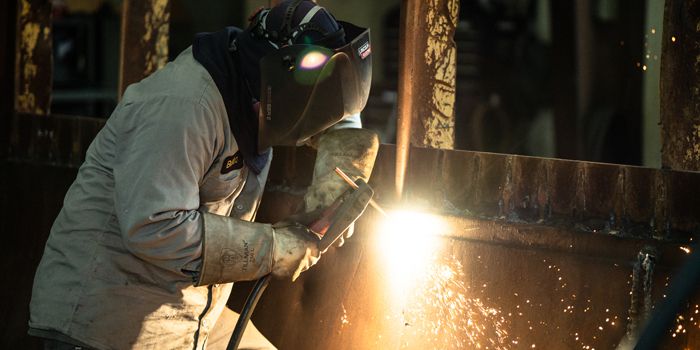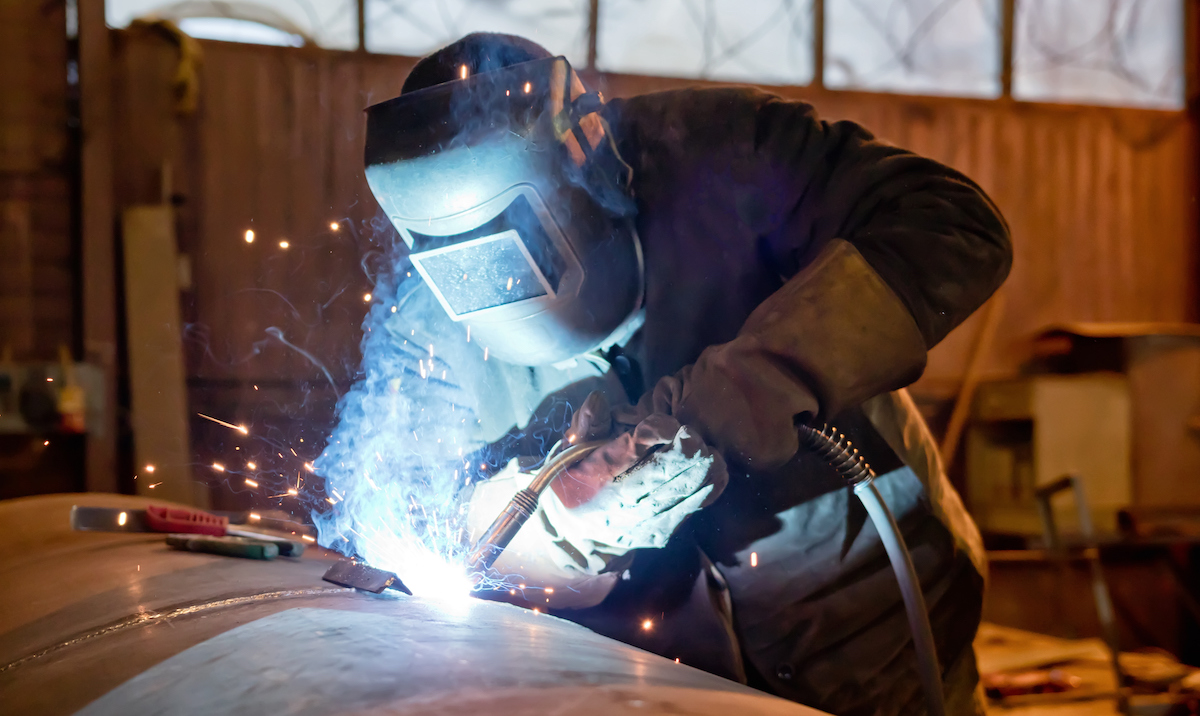Common Welding Repair Work Issues and Exactly How to Address Them Successfully
Welding repairs typically encounter a series of issues that can threaten the integrity of the last item. Common troubles consist of inadequate infiltration, porosity, and misalignment, to name a few. Each defect offers one-of-a-kind obstacles that call for certain approaches for resolution. Recognizing these concerns is essential for welders aiming to enhance their results and abilities. This discussion will certainly explore these typical welding repair service problems and effective approaches to address them.
Insufficient Penetration
Poor penetration takes place when the weld metal falls short to completely fuse with the base product, resulting in weak joints and potential structural failures. This issue typically originates from inadequate warm input, inaccurate electrode angle, or incorrect welding rate. Welders might come across insufficient penetration as a result of a miscalculation of the necessary criteria for a certain material density or type. In addition, contamination on the base material's surface area can prevent reliable bonding, aggravating the trouble. To resolve inadequate infiltration, welders should ensure ideal settings on their devices and keep a clean work surface. Routine assessment of welds is recommended to recognize any kind of deficiencies early, permitting timely improvements and the avoidance of compromised structural stability in bonded assemblies.
Porosity
Porosity is a common defect in bonded joints that manifests as little gas bubbles trapped within the weld metal. This flaw can compromise the stability of the weld, resulting in reduced toughness and possible failing under stress and anxiety. Belgrade Welding. Porosity usually occurs from contamination, moisture, or inappropriate welding techniques, which allow gases to run away into the molten weld pool. To attend to porosity, welders must guarantee correct surface preparation, maintain a tidy workplace, and use suitable welding specifications. In addition, choosing the right filler product and securing gas can reduce gas entrapment. Normal examination and screening of welds can aid determine porosity early, guaranteeing prompt restorative actions are taken, consequently protecting the top quality and dependability of the welded framework
Misalignment
Imbalance in welding can emerge from various factors, consisting of improper arrangement and thermal growth. Recognizing the source is important for reliable resolution. A number of adjustment methods are readily available to straighten elements and guarantee structural honesty.
Root causes of Imbalance
Welding misalignment typically stems from a variety of underlying problems that can jeopardize architectural stability. One primary reason is improper fit-up of elements prior to welding, which can cause gaps and irregular surfaces. Variations in thermal growth throughout the welding process can also cause distortion, specifically if the materials being joined have various coefficients of expansion. Furthermore, inadequate fixturing and securing may fail to hold elements securely in position, leading to movement throughout welding. Poorly conserved equipment, including welding makers and devices, might present incongruities in the weld bead, additional adding to imbalance. Ultimately, driver mistake, stemming from not enough training or experience, can also play a considerable duty in developing misaligned welds.
Adjustment Techniques Offered
Dealing with imbalance effectively needs a mix of corrective methods tailored to the particular issues available. One typical method is making use of components or jigs to hold components in the correct setting throughout welding, making sure consistent positioning. In addition, pre-heating the products can assist decrease distortion and boost fit-up. For considerable misalignment, mechanical adjustment strategies, such as utilizing hydraulic jacks or clamps, can be utilized to remedy the setting prior to welding. Post-weld warm treatment might additionally be necessary to ease tensions triggered by imbalance. Cautious assessment and modification throughout the configuration stage can prevent imbalance problems from coming to be significant troubles, advertising a smoother welding procedure and enhancing general structural stability.
Distortion
Distortion is a typical difficulty in welding that can develop from different variables, including unequal heating & cooling. Recognizing the root causes of distortion is important for executing reliable prevention methods. Resolving this issue not only improves architectural integrity but likewise improves the total quality of the weld.
Causes of Distortion
When based on the intense warmth of welding, products commonly undertake modifications that can cause distortion. This sensation primarily occurs from thermal expansion and tightening during the welding procedure. As the weld area warms up, the material increases; upon cooling, it gets, which can create interior stress and anxieties. Furthermore, unequal heating across a workpiece can worsen these anxieties, resulting in warping or flexing. The kind of product likewise plays a significant function; metals with differing thermal conductivity and stainless steel electrode coefficients of expansion may react in different ways, leading to uncertain distortions. Bad joint design and poor fixturing can contribute to misalignment during welding, enhancing the chance of distortion. Recognizing these causes is vital for effective welding repair work and avoidance techniques.
Prevention Techniques
Reliable avoidance techniques for distortion during welding focus on managing warmth input and ensuring correct joint layout. Preserving a constant warmth input aids to lessen thermal development and tightening, which can lead to distortion. Using techniques such as preheating the workpiece can also minimize the temperature slope, promoting uniform heating. Additionally, selecting appropriate joint styles, such as T-joints or lap joints, can improve stability and minimize stress and anxiety concentrations. Implementing proper fixturing to safeguard the workpieces in position better aids in preserving alignment during the welding process. Finally, staggered welding sequences can distribute warmth much more evenly, preventing local distortion. By applying these methods, welders can substantially reduce the probability of distortion and boost the general quality of their welds.
Breaking
Fracturing is a typical issue run into in welding repair services, often resulting from various aspects such as incorrect air conditioning prices, product option, or inadequate joint prep work. The incident of splits can significantly endanger the honesty of the weld, bring about prospective failures during procedure. To resolve this concern, welders need to first examine the root creates, ensuring that products are suitable and properly selected for the details application. In addition, regulating the air conditioning rate during the welding process is necessary; sites fast cooling can cause stress and anxiety and result in breaking. Appropriate joint design and preparation also add to minimizing the risk. Implementing these methods can enhance weld top quality and sturdiness, inevitably decreasing the chance of cracking in finished weldments.

Insufficient Combination
A substantial issue in welding repairs is insufficient fusion, which occurs when the weld metal does not effectively bond with the base product or previous weld passes - Belgrade Fabrication. This problem can cause weaknesses in the joint, potentially endangering the honesty of the welded structure. Elements adding to insufficient combination consist of not enough heat input, inappropriate welding technique, and contamination of the surface areas being signed up with. To address this problem successfully, welders should ensure appropriate pre-weld cleaning and surface prep work, as well as readjust their welding criteria to attain adequate penetration and combination. Routine examination during the welding procedure can additionally aid recognize insufficient fusion early, permitting prompt restorative actions to boost the overall high quality of the weld
Overheating
While welding repair work can enhance structural integrity, overheating presents a significant obstacle that can bring about material destruction. Too much warm during welding can change the mechanical residential or commercial properties of steels, leading to reduced strength, increased brittleness, and bending. This sensation is specifically critical in high-stress applications where architectural integrity is extremely important. Identifying getting too hot can entail visual assessments for staining or distortion, as well as keeping track of temperature level during the welding process. To mitigate the risks connected with getting too hot, welders must use proper methods, such as controlling warm input, readjusting travel rate, and making use of suitable filler products. Additionally, executing pre- and post-weld warmth therapies can assist restore material buildings and enhance the overall quality of the fixing, making certain lasting efficiency and security.
Regularly Asked Questions
What Are the Common Signs of a Welding Problem?

Exactly How Can I Check My Welds for High quality?
To examine welds for top quality, one can use visual evaluations, ultrasonic testing, and radiographic approaches. Each strategy guarantees architectural honesty, determines defects, and verifies adherence to specified standards, eventually boosting the dependability of the bonded joints.
What Security Safety Measures Should I Take While Welding?
When welding, one need to prioritize safety by using appropriate personal safety equipment, guaranteeing proper ventilation, securing combustible products away, keeping a clean work area, and knowing environments to stop crashes and injuries.
Can I Repair a Weld Without Renovating the Entire Joint?
Repairing a weld without redoing the entire joint is possible, depending on the damage (Montana Mobile Welding and Repair). Strategies such as grinding, including filler product, or using a welding procedure can successfully resolve details defects while preserving the bordering structure
What Tools Are Important for Reliable Welding Services?
Essential devices for efficient welding repair work include a welding maker, cord brush, grinder, safety equipment, clamps, and filler materials. Each device plays an important duty in making certain quality and safety and security throughout the repair work process. Porosity normally occurs from contamination, internet wetness, or improper welding strategies, which allow gases to leave into the molten weld swimming pool. Poorly maintained equipment, including welding makers and devices, might present incongruities in the weld grain, more contributing to imbalance. When subjected to the intense warm of welding, materials usually undergo changes that can lead to distortion. Cracking is a typical concern encountered in welding repair services, typically resulting from different factors such as inappropriate air conditioning prices, material option, or poor joint prep work. A substantial problem in welding fixings is insufficient combination, which takes place when the weld steel does not properly bond with the base material or previous weld passes.